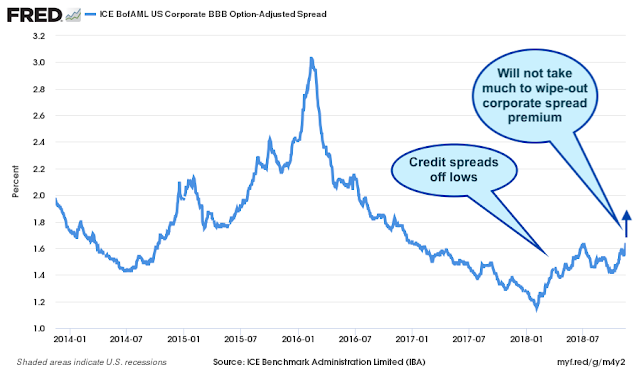It does not take much for an investor to have a losing credit trade on long duration bonds. The average duration on a long-term 10-year corporate is around 8 and current OAS spreads for triple-B corporates are 160 over Treasuries up from 120 earlier in the year. Half this move will take investors back to levels seen in 2016 and wipeout all of the spread compensation for a year. This is not an extreme bet if we have any further erosion of equity prices or change in credit risk expectations, (See Corporate debt growth has exploded – The added macro shock sensitivity creates real risks.) Shorter duration corporates will be at less risk given their lower duration but the stocking up of credit for yield reaching can be painful if credit risks increase.
Even if investors hold the bonds for the longer-run, the marking to market will impact portfolio values. Holding less risk and moving to cash is a valid alternative, but this will place any investor at a severe disadvantage of reaching return targets.
Portfolio protection is critical, so holding alternative defensive strategies need to be replenished. Any futures or derivative swap product may still allow investors to receive the risk free rate with excess returns associated with other risk premia beyond credit. The amount of excess returns from alternative risk premia can be dialed to a level of volatility that can match bond risk.
Credit investing was an effective investment choice when rates were headed lower, spreads were higher, and the economy was improving. A new environment of late business cycle risks, falling equity values, Fed tightening, and spread widening requires different thinking.

